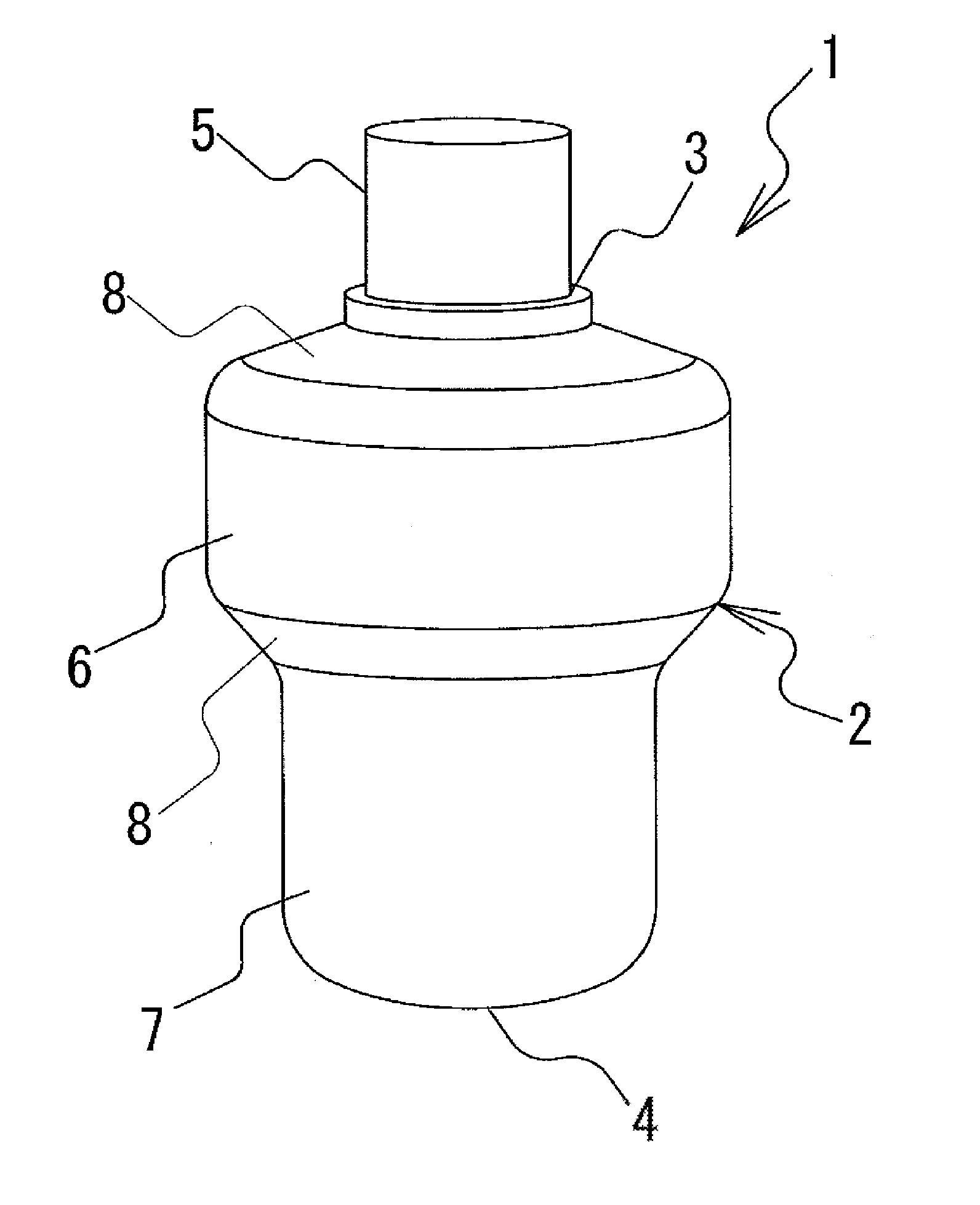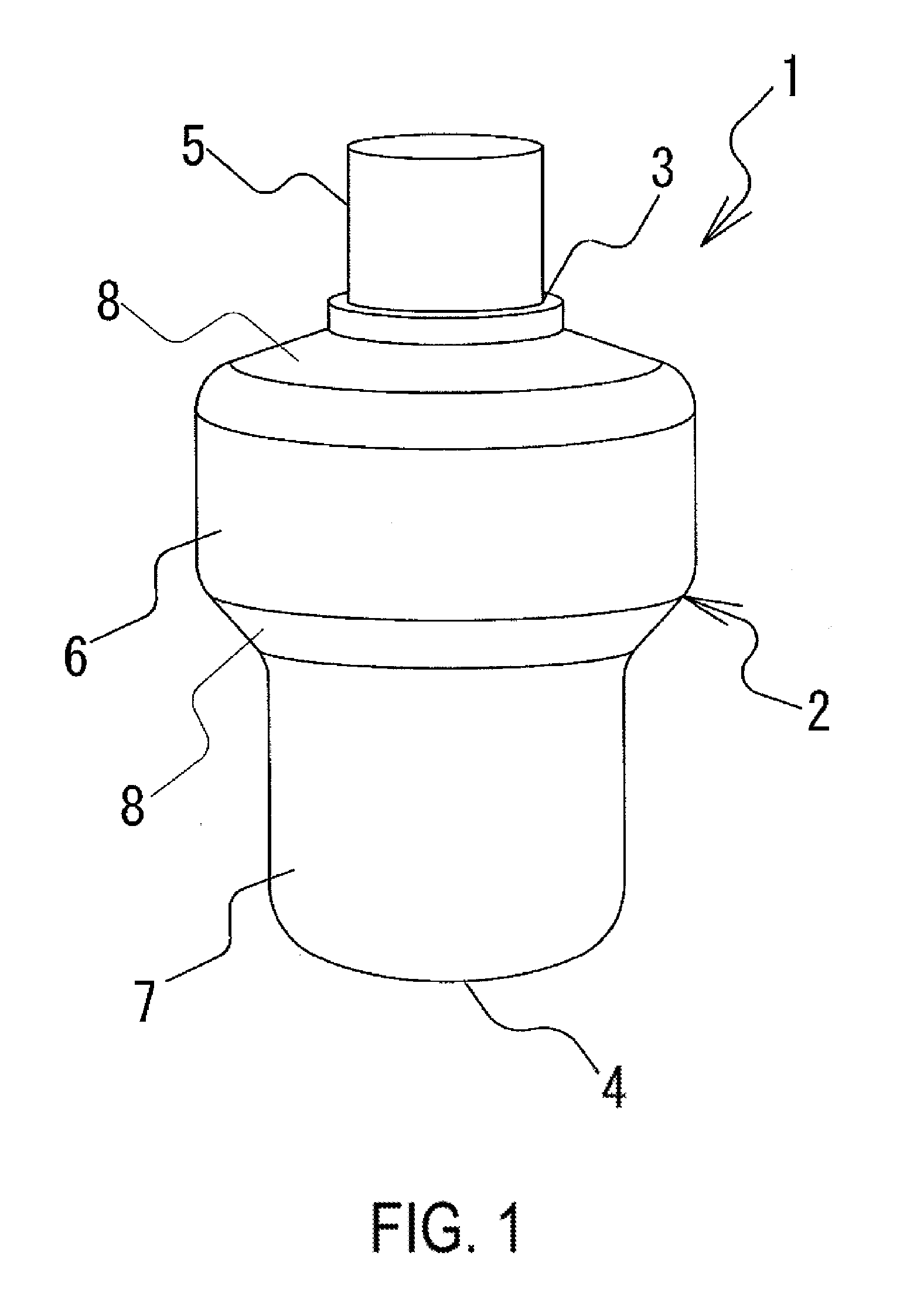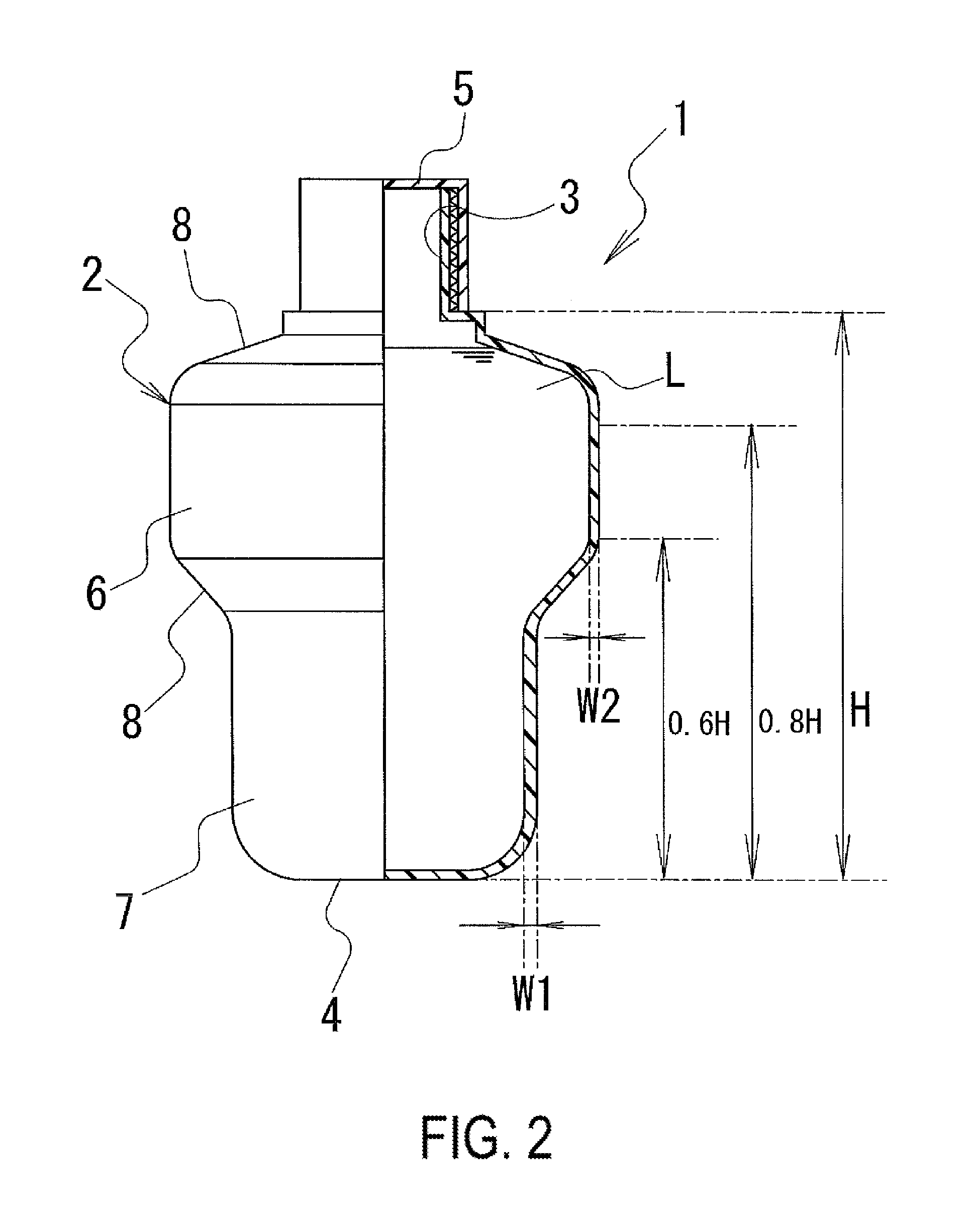Puncture Repair Liquid-Holding Container
a liquid-holding container and puncture technology, applied in the direction of flexible containers, packaging, tyres, etc., can solve the problems of improving the squeezability of the container, and achieve the effect of convenient grasping, efficient injection into the tire, and efficient delivery
- Summary
- Abstract
- Description
- Claims
- Application Information
AI Technical Summary
Benefits of technology
Problems solved by technology
Method used
Image
Examples
examples
[0042]Puncture repair liquid-holding containers according to a Conventional Example 1 and Working Examples 1 to 6 all having a volume of 350 mL and having different dimensions with respect to the presence / absence of large- and small-circumference sections, frontal shape, the ratio of the circumference of the small-circumference section to the circumference of the large-circumference section, the shape of the bottom, the height of the half-volume line, the wall thickness of the large-circumference section, and the wall thickness of the small-circumference section as shown in Table 1 were prepared.
[0043]In all of the examples, the outer wall of the container body had a three-layered structure made of a synthetic resin, and the intermediate layer thereof was made of an ethylene / vinyl alcohol resin.
[0044]Puncture repair liquid injection time was measured for these experimental examples according to the method described hereafter; results are shown in Table 1.
[0045]Puncture Repair Liquid...
PUM
| Property | Measurement | Unit |
|---|---|---|
| thickness W1 | aaaaa | aaaaa |
| thickness | aaaaa | aaaaa |
| volume | aaaaa | aaaaa |
Abstract
Description
Claims
Application Information
 Login to View More
Login to View More - R&D
- Intellectual Property
- Life Sciences
- Materials
- Tech Scout
- Unparalleled Data Quality
- Higher Quality Content
- 60% Fewer Hallucinations
Browse by: Latest US Patents, China's latest patents, Technical Efficacy Thesaurus, Application Domain, Technology Topic, Popular Technical Reports.
© 2025 PatSnap. All rights reserved.Legal|Privacy policy|Modern Slavery Act Transparency Statement|Sitemap|About US| Contact US: help@patsnap.com



